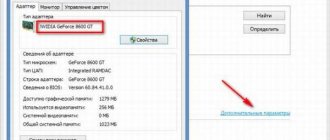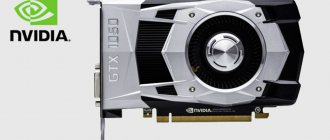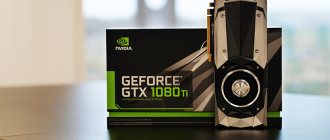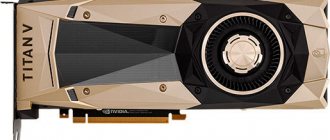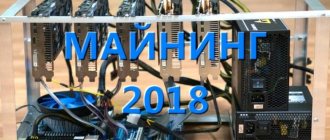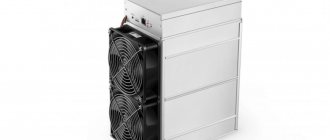I think if you clicked on this article, then you already know what a mining farm is much better than us and you don’t need to explain it.
How it works, what systems there are and why this is all done we will not consider in this article.
Now let's talk about a more pressing problem, the solution to which turns out to be far from being as trivial and obvious as it might seem at first glance.
Based on the results of our numerous calculations and tests, we have developed several optimal options for ready-made solutions for cooling systems for mining farms, the performance of which we guarantee . You can get acquainted with them on the page “Ventilation and cooling of mining farms from 35 kW.”
Simple and free
How to cool a mining farm if there is no opportunity to invest additional funds? Create a draft in the room. Yes, the temperature outside the window cannot be called comfortable, but it is still better than the accumulated heat inside the room. According to the laws of physics, heated air will tend to escape out the open window, being replaced by cooler air. Here you need to position the rig correctly so that the air flow from the draft passes specifically through it.
What is the best way to cool a mining rig at home, but still for free? Add a bowl of ice to the room. Working video cards are active dehumidifiers, and air without moisture becomes hotter. Regular ice can be replaced with dry ice, since it evaporates and has a lower temperature. But you will have to periodically replace this homemade device.
Room ventilation
Window
Let's start with the most banal and generally inexpensive way to ventilate the room where the farms are located.
The best way is to keep the window in the room open. Yes, in the warm summer season this will not have a huge effect, but hot air will still circulate around the room and leave it a little.
Plus, if you open the door of the room where the rigs are located all the way, there will be a small draft that will blow residual heat (hot air) out of the room.
In winter, or simply during the cold season, an open window will noticeably cool the room and the rigs themselves. The temperatures of even fairly hot Asus RX570 Dual will drop by 5-6 degrees.
In the winter season, with the window open and the air temperature outside -2 degrees, provided that there are 4 farms in the room, the temperature of a rig of 6 Asus Rx570 dual (with a small additional fan) does not exceed 48 degrees!
We also note that in the cold season, the combination of an open window and an open room door will significantly cool the farm. But we will also say that even with the door closed the effect will be noticeable. The main thing is to install the trusses so that they are located in the very center of the draft (cold air flow).
Water and ice
Many miners use basins, buckets of water and ice from the freezer to humidify the room (and as we all know, farms significantly dry out the air in the room). This method makes the room a little fresher (we would say slightly).
Some people use a slightly unusual option. They place bowls of water around the room and put dry ice on trays or plates. As we know, dry ice has a fairly low temperature (-79°C) and unlike regular ice, dry ice does not melt, but instead evaporates.
This method is already expensive and requires quite frequent intervention.
Humidifier
This method requires the purchase of quite expensive equipment - an air humidifier.
This helps humidify the room, making it a little cooler. Unlike the previous method, the humidifier will constantly work and not evaporate naturally.
The humidifier must not be placed near farms! It must be located at the opposite end of the room.
Naturally, this device will not give a stunning effect, but it will cool the video cards a little and make being in the room more favorable.
Still available
With an automatic humidifier, the problem of constantly adding ice disappears. Modern models are equipped with a spacious water tank, so they can provide continuous hydration for even 12 hours. But this is no longer a free option, but you still have to purchase such a device. The farm must stand at a distance of more than 3 meters from the humidifier, otherwise an attempt to cool will lead to a short circuit and failure of all equipment.
Ventilation and cooling system for mining farm
– it would be more accurate to say not only ventilation, but rather a system for maintaining the necessary microclimate of the room, that is, maintaining the temperature for the uninterrupted and safe operation of your equipment, both in winter and in summer.
Each period of the year has a number of key features to maintain the necessary climate parameters in the mining premises. At its core, the cooling system for miners on video cards and miners on ASICs is not fundamentally different.
Let's start by considering the necessary microclimate parameters for one of the most modern models of farm equipment - the ASIC Antminer S9.
Paid but effective
How to cool a mining farm on a balcony in the summer, if there is already open space there, but the temperatures are still high? 1 or a pair of fans will help here. Many may say that they are not needed, because each GPU is already equipped with 2-3 pieces. This is a mistake, since the original fans are much smaller than the additional one that you can buy and place next to it.
A large floor plate pushes air under pressure, simultaneously pushing cool air into the rig and removing hot air. But you should not let the air flow go directly to the video card cooler, as this will interfere with their natural rotation. Subsequently, this can lead to breakdown of the original fan or deterioration in its performance.
The direction of the air masses should be towards the backplate. In this case, the rig must be placed so that it blows the heat towards the street. A couple of tips for choosing a fan for a mining farm:
- Power 50 W and above.
- Large blades.
- Lots of blades.
- Possibility of speed adjustment - faster and slower.
You can refuse additional functions, since there is no point in overpaying for them, because the main task is cooling. Don't forget to clean it once a month, removing dust from the blades. The axle may need to be lubricated every six months.
Additional coolers
Note: the temperature range for normal operation of ASICs and video cards is from 0°C to +60°C on average. If your cryptocurrency mining farm has several floors, then the temperature increases with each next one. Therefore, the distance between floors should be 30-40 cm - each subsequent video card absorbs air already heated by previous cards, the temperature of which can reach 70, or even 90 degrees.
Leave at least 10 cm between the cards themselves. If this is not enough and the temperature is still elevated, install additional coolers and fans. Opposite each of the overheated cards.
Important: it is better to use more fans than to set the speed of the existing ones to maximum. It is this part of video cards for mining that most often fails, do not overload it, the optimal maximum power is 70%. Or use additional cooling methods.
If your mining farm is located on a balcony and it is possible to retrofit its ventilation system, an exhaust container with additional fans will do. Install it above the farm. You can add a corrugation to it to isolate the hot air that escapes.
Thermal paste
Thermal paste is an adhesive substance that cools the heat sink or processor and other electronics. This is one of the most common ways to control the temperature of processors. But it needs to be supplemented in one or more other ways.
You need to change thermal paste every six months to a year when you clean the cooling system and fans for video cards.
Beautiful and moderately effective
How to make cooling for a mining farm without spoiling the appearance of the structure and premises? Case fans will help here - 1 piece for each GPU. There is no need to chase expensive Noctua or something similar, a simple turntable will do. Next, you will need to come up with a mount in such a way that the air flow from additional coolers does not interfere with those on the video card. You also need to connect them somewhere.
They should be located as close as possible to the cooled elements. There is air pressure here, but only at a distance of up to 15 cm.
Alternatively, you can force air currents to move inside the mining rig. To do this, on the one hand, all coolers are installed for blowing, and on the opposite side, for blowing. This is a good cooling option that will help you lose 5-7 degrees. The video card immediately receives cool air, and another fan sucks the warm air out of it. Only the heat outflow cannot be done from the farm towards the wall, as this will reduce the efficiency significantly.
Installation of a ventilation system for a mining farm
The classic heated supply ventilation system is designed as follows. It includes the following equipment:
1. Fan - provides air flow from the street 2. Electric or water heater - to heat the street air to a given temperature 3. Filtration system - designed to clean the air from dust, dirt, insects, etc. It is a very important parameter to ensure that the equipment operates in a dust-free room. 4. Damper with an electric drive - for opening/closing the channel when turning the ventilation on/off 5. Automation and control system - designed to control and regulate air flow and temperature. 6. Air duct system - supply air is transported through it and distributed to the right places for maximum efficient operation
Cools well, but expensive
By installing an air conditioner in the room, you will forever forget about the question of how to cool the mining farm. This unit will not just circulate air indoors, but will make it much cooler. It is believed that at an ambient temperature of up to 24 degrees, video cards feel most comfortable. And this can be achieved with the help of air conditioning.
Here you will have to spend money on the expensive unit itself and its installation. In addition, it creates an additional load on the electrical network, which must be taken into account when connecting. Take into account the cost of air conditioning even when calculating income from cryptocurrency mining, so as not to accidentally go into the red.
Types of video card cooling
The first thing that comes to mind when thinking about the ventilation and cooling system of a miner is coolers. But not with air alone—there are two types of cooling for video cards:
- Air - using fans and coolers that blow air through the working elements, regulating their temperature (hot air is removed, cold air is pumped in).
- Water - cooling the system using tubes with water or other liquid with good thermal conductivity and heat capacity, plus the design of water block plates made of copper and aluminum. This is a much more efficient, but also more expensive heat sink option; it is also used in mining, but it is not suitable for everyone due to the cost. And water ventilation systems are quieter and look more presentable. But they are also more difficult to install - each part of the mining rig that needs to be cooled requires its own radiators with the appropriate type of fastening.
Most effective, but expensive and difficult
There are several options for making a hood for a mining farm. You can read the Internet yourself, and use the rollers to punch a technical hole and insert an exhaust fan into it. Heat will leave the room, but there will be no flow of fresh air. To ensure complete circulation and cool the air, a more complex design will be required, comparable to a production one. And it has several disadvantages:
- energy consumption;
- noise;
- you need paid help from ventilation specialists;
- you will have to purchase additional equipment with a cooling unit, channels, etc.
One plus is a good influx of cooled air and outflow of warm air. But in the case of a regular home rig, the negative factors outweigh the positive ones. Calculate how much the work will cost, how much electricity it will consume in the future, and compare it with the income from crypto mining. If the calculations are satisfactory, then you can safely make a hood.
Climate parameters for mining farm operation
The main technical characteristics of the ASIC antminer s9, which are important from the point of view of thermal conditions:
| Parameter | Meaning |
| Electrical power consumption | 1400 W |
| Operating temperature range | from 0°С to +40°С |
| Cooling Cooler Performance | 338 m3/h |
| dimensions | 329 x 127 x 159 mm |
Rice. 1 – Asic Antminer S9
Each device has a certain thermal power. In this example, we consider it equal to the consumption, that is, 1400 W (1.4 kW). This heat must be removed from the room in order for the temperature to remain within the acceptable range. If excess heat is not removed, the equipment will overheat after some time and will shut down or simply fail.
Accordingly, if you have 100 of these ASICs, then this is already 140 kW of heat that needs to be removed from the room.
How to keep your rig from overheating
Simple rules that will make life easier for video cards:
- Once a month, clean all rig equipment from dust.
- Maintain the speed of the original cooler at 60-80%. It's better to add an external fan than to keep it spinning at maximum all the time.
- At night, open the windows and create a draft so that the walls and the structure itself receive an influx of cool air.
You don't always need air conditioning or a professional hood. A GPU from a good company with a pre-installed highly efficient cooler, plus a floor fan and a humidifier will help reduce the temperature by 10-15 degrees.
5 2 votes
Article Rating
How are water blocks used?
To cool video cards, homemade or ready-made solutions (water blocks) are used. The cooling system consists of several parts:
- a plate on which the water block rests;
- full chamber water block;
- liquid reservoir;
- pump;
- radiator;
- fan;
- fittings, expanders;
- set of tubes and splitters.
After connecting the system to a power source, the pump pumps antifreeze from the reservoir through an acrylic tube. Under pressure, the liquid enters the water block. There it is distributed across two cells, reducing the temperature of the GPU and cooling the VRM (voltage regulator). After this, the heated antifreeze passes through the radiator with a fan and then returns to the reservoir. The cycle repeats again.
Previously, users used water blocks only to cool the graphics core. However, in high-performance video cards, when overclocked, this causes overheating of other elements. Therefore, we had to abandon cooling only the GPU in favor of other options.
In 2022, NVIDIA released the EK-FC GeForce GTX FE universal water block. It turned out to be compatible with 106 video cards from the manufacturer and was prepared in four versions. This solution removes heat from the graphics core, memory chip and batteries. Similar models (they are also called full covers) subsequently appeared for AMD Radeon video cards.
Why water cooling attracts miners
Home miners using water cooling solve several problems at once:
- noise disappears, decreasing to 10-15 dB;
- dust does not get into the fans, since they are dismantled and not in use;
- you can overclock the equipment and increase the hashrate;
- it is possible to design a truss of your own design;
- saving space, no need to allocate a separate room for the farm;
- Manufacturers sell ready-made options for their video cards.
Disadvantages of water cooling
However, installations with water blocks have several significant disadvantages, which makes the solution not the most rational for home mining. Among the disadvantages we highlight:
- danger of liquid leakage and damage to electronic components;
- skills in designing and creating your own structures in relation to trusses are required;
- modifications of high-performance video cards with water cooling and the water blocks themselves are several times more expensive than their air-cooled counterparts;
- in any case, you will need to install a radiator with a fan outside to cool the farm;
- Reselling used video cards on water takes longer than on air.
Thus, water cooling does not solve all the problems of miners, guaranteeing only the absence of noise, dust and increased hashrate. Therefore, some manufacturers have gone further, abandoning the use of water blocks in favor of immersion cooling, as a more profitable solution for home mining.
Mistakes Owners Make
The main purpose of this article is to point out the mistakes of mining farm owners, give precise and detailed instructions for correcting these mistakes, and tell the technical aspects of supporting the required equipment. So, step one: mistakes.
- The most common mistake is not installing an HVAC system at all. If you simply did not know that this needed to be done, this does not refute you. Ignorance is no excuse from responsibility. The first thing you had to do when buying servers was to find out everything about them, absolutely everything they needed for efficient and long-term operation. If you have already burned down at least one server, the blame lies with your lack of preparedness.
- Another equally popular mistake is to install one household wall-mounted air conditioner for all your miners in order to save money. Such an air conditioner can cool your room or apartment, but not your mining equipment. It heats up very quickly and requires special calculations when selecting an air conditioner that will provide the ideal cooling power for the operation of your number of miners.
- Installing air conditioners is much more powerful than necessary, say, for the future, with plans to purchase more servers. How efficiently do you think your systems will work if they are in constant hypothermia and freezing?
- Install cooling, but forget about ventilation. Ventilation of the premises for a mining farm is no less important than air conditioning - we will explain why in the next chapter.
- Installing climate control equipment in the wrong places, using inappropriate mounting elements, installing the system incorrectly around the room, carrying out installation incorrectly - all this can be reduced to turning to climate control specialists “from the garage”, that is, without experience. Have you invested a lot of money in your mining rig and now you don’t want to take care of it? Bring the job to an end, arrange turnkey design work with specialists, and your brainchild will work flawlessly.
High Power Immersion Cooling
Modern electronic components are getting faster and faster every year. Speeds are increasing, consumption and heat dissipation are increasing. Modern trends in immersion cooling of processors and video cards are increasingly becoming part of our lives. There are many offers of immersion cooling systems on the market, but upon first acquaintance, their fundamental differences are not so easy to determine. We compared the technologies empirically and identified their disadvantages and advantages.
Overheating of equipment as the scourge of modern electronics
Everyone knows that modern electronics run on electrical power.
This device either has a battery or needs to be plugged into an outlet. And they all have one more thing in common - they heat up. For example, modern phones actively generate heat when performing resource-intensive tasks: games, high-quality video recording, etc., and gamers know that large and efficient coolers are needed for the smooth operation of their powerful computers. Electric current from the power source passes through microcircuits, consisting mainly of semiconductors of complex structure. A semiconductor is a material that partially conducts electric current and partially does not. Its conductivity depends on voltage, temperature and other conditions.
If you take several different semiconductors and arrange them in three layers, you can achieve unexpected results. If voltage is applied to the 1st and 3rd layers, no current flows through such a “sandwich”. But if you pass a very small current through the 2nd layer, then between the 1st and 3rd layers the current begins to flow almost unhindered.
A device operating on this principle is called a transistor. Now its structure, of course, is more complex, but the rule remains the same - control of the flow of current due to the control gate. This effect can be compared to a water tap. Particular attention in the operation of a transistor is paid to the process of transition from a closed state (no current flows) to an open state (current flows unhindered). Common sense dictates that the transition from one state to another cannot be instantaneous, and, although it takes a very short, but still not zero period of time. It is at the moment of switching between these states that the current flows poorly, which causes the transistor to heat up.
Modern processors operate at frequencies up to 4 GHz, which means that the transistors in the processor make 4,000,000,000 switches per second! And each such switching causes the device to heat up.
It is for this reason that when overclocking the processor (overclocking), the heating process is especially pronounced.
A radiator with a fan is used to remove heat to the surface of the processor. The fan blows cool air through the radiator fins and removes the heat generated by the processor. This approach is the easiest to use, which is why it has become widespread.
The development of electronics has led to the fact that every year the speed of processors and the number of transistors rapidly increased, but the size of the processor invariably remained at the same level. Compare the Intel 486 processor at 33 MHz and a modern Intel I7 at 3.8 GHz. The size is the same, the speed is much higher, which means higher power consumption and heat dissipation.
It should be noted that for the transistor to operate correctly, its temperature must remain low, otherwise it begins to conduct electric current even when it is not required to do so. It turns out that the faster the processor, the more it heats up, and the higher the chance that the transistors inside it will not work correctly. This effect is observed, for example, during overclocking and is expressed in the form of the famous “blue screen of death”. When the processor detects a failure in its own operation, the OS stops its operation, and the user is shown a blue screen with information about the current state. If you continue to operate in this mode, there is a high probability that at least one transistor out of several billion will break. This will lead to regular malfunctions and the inability to use such a processor in the future.
This is why it is so important to use good cooling systems and operate electronics at the specified temperature conditions. The pursuit of speed can lead first to random freezes, and then to permanent ones, with further damage to the processor.
This principle applies primarily to modern CPUs - and especially GPUs. Due to the difference in the architecture of these two computing devices, the GPU heats up more strongly - simply because almost all the transistors inside are used during operation. The average power of a top-end CPU is 90 W, and the GPU is 200 W. Therefore, the radiators of modern video cards are much larger in size than the radiators of central processors.
When cooling large computing capacities, additional difficulties arise. The power of server equipment located per square meter is extremely high, amounting to tens of kW. In addition, it is necessary to maintain a constant microclimate, without fluctuations in temperature and humidity. Let's take a closer look at the definition of the word “humidity”: the concentration of water molecules per unit volume of air; Under certain circumstances, moisture can condense and turn into water, which is a very good conductor of electricity - which is very dangerous for electronics. Server rooms also have another enemy - dust, which clogs radiators and significantly reduces cooling efficiency.
Traditional and alternative cooling systems
Even despite all these difficulties, manufacturers of modern server equipment still continue to use air to remove heat.
Almost all modern server rooms are designed for air cooling, with a division into cold and hot aisles. To ensure climatic conditions throughout the year, powerful climate control units are installed, which include air conditioners. Such installations themselves consume a lot of electricity and, paradoxically, also produce a lot of heat. And this solution, unfortunately, is widespread. An alternative air cooling technology is free cooling. Air comes from outside and blows through the server room, freely flowing outside. This approach reduces equipment costs, but this solution is not suitable for hot countries. In addition, the air remains dusty, and its humidity corresponds to the humidity outside, which is accompanied by fluctuations in both humidity and temperature inside the object.
Immersion cooling system
Relatively recently, immersion cooling technologies have gained popularity.
Developments on this topic have been carried out for a long time, since the technology itself is no longer new, but now its demand is growing at an extraordinary pace. The word "immersion" means "immersed." This means that all electronics, all server boards, processor, video cards, power supplies and hard drives are completely immersed in liquid. Naturally, this liquid is a dielectric and does not conduct current - otherwise the operation of electronics would be impossible. Upon further analysis of the proposed solutions, it becomes clear that immersion cooling can be different, with or without a phase transition. These types of cooling differ not only in their physical principle, but also have significant differences in operation.
Thus, mineral oil has been used to cool power transformers in substations for a very long time. This substance is characterized by the absence of electrical conductivity and sufficient heat capacity. You can also note its low cost.
3M's Novec two-phase cooling fluid, as opposed to mineral oil, is a relatively new product. It also does not conduct electricity and has a low heat capacity. Surprisingly, the cooling effect with its help is achieved through boiling. For a more detailed analysis of this phenomenon, we will need to remember the laws of physics. Heating of a liquid occurs due to the transfer of energy from a warmer object to a colder one. The amount of energy, or amount of heat, is measured in Joules. One Joule is the equivalent of heating the body with 1 W for one second.
Thus, the video card emits 200 W * 1 s = 200 J of heat if it has been running for just one second. In a minute the card will generate 200 W * 60 s = 12 kJ of heat. The second question that arises is temperature. How much will the temperature of the video card change with such heating? The temperature change will depend on the heat capacity of the object we are heating and its mass. It is quite obvious that a glass of water in a kettle boils much faster than a full kettle.
Let's imagine that we are trying to heat 1 liter of water with one video card. The weight of 1 liter of water is approximately 1 kg. The heat capacity of water is approximately 3800 J/kg/K. This means that heating water weighing 1 kg by 1 degree Celsius will require 3800 J of energy. Let's compare this with the power of our video card and get 12000 / 3800 = 3.15 degrees Celsius. And this - in just a minute! With simple calculations you can establish that after 10 minutes the water will heat up by 31°C. Naturally, such a process will not continue forever. So, if we neglect the thermal conductivity of materials, the water will heat up to 85–90 degrees, after which the video card will overheat and freeze.
If we modify our experiment and after 10 minutes replace the heated water with cold water, the heating process will begin again. In this case, the card will not overheat. Of course, it is inconvenient to change the water every 10 minutes, and the idea comes to stretch pipes through which cold water will flow and heated water will flow out. Such liquid cooling systems exist and are sold in many computer stores.
Let's return to mineral oil immersion cooling. To do this, in our calculations we need to change the heat capacity and mass of the substance. The weight of 1 liter of oil is slightly less than a liter of water and is 0.85 kg. The heat capacity is 1800 J/kg/K. This means that to heat a liter of oil you need 0.85 kg * 1C * 1800 J/kg/K = 1.5 kJ of energy. This means that the video card heats the oil by 12000 / 1500 = 8 °C in 1 minute. This is much more than 3.15 °C. However, this method has a big advantage - it does not require pipes for supplying and discharging liquid to each video card. You can simply put several video cards in one bath and fill them with mineral oil.
The problem of overheating of the oil itself in our case also does not go away. As soon as the oil warms up to the temperature of the video card, it will no longer absorb heat, and the equipment will begin to overheat. We will have to somehow supply cold oil and take away hot oil again.
A simple solution could be used: a large container of cold oil and a storage container for the already heated oil. Naturally, installing such huge tanks is not economically feasible, so we will have to circulate the oil in a closed circuit and cool it outside the immersion bath. This will require additional installation of the radiator outside, where cooler air will blow over it. Providing purging with street air is quite natural: there is a lot of cold (compared to the oil temperature) air outside, and hot air is carried away by the wind.
But how long will it take for the radiator to cool 1 m3 of air by the same 8 degrees? After all, after making calculations, we will find that to cool one video card you need about 1 liter of cold (cooled) oil per minute; In this case, the oil will have time to warm up by 8 degrees. That is, the radiator must be designed to cool the oil by just 8 degrees with cold air.
Another important element that was left outside of our calculations is the pump. The requirements for it are much simpler - to ensure the circulation of 1 liter of oil per minute. Special attention should be paid to the viscosity of the oil. It is clear that due to its lower viscosity, 1 liter of water will pass through the pipes and through the radiator much easier than 1 liter of oil. That is, we will need either a powerful pump or large pipes and a radiator.
Let's now imagine that now you have not one, but at least 100 video cards. This is already 20 kW of heat and 12,000,000 J of energy per minute. Then, under equal conditions, the pump should pump 100 liters of oil per minute. Imagine what difficulties arise when there are 1000 video cards in the system...
Let's move on to two-phase immersion cooling with Novec liquid. Very often you can hear that it is expensive, very volatile, evaporates easily, etc. Of course this is true, because the principle of its operation is completely different. When this liquid is heated above 61°C, it evaporates. However, at the same time, neither heating nor cooling occurs with it. When the entire volume of liquid is heated after starting, once it reaches 61°C, the temperature simply does not increase. This seems absurd, but it is true. The evaporation (boiling) process itself is very energy-intensive. Perhaps this process can be compared to the sensations of a person who swims in the summer and comes out of the water. It feels warm in the water, but gets cold in the wind. The reason for this phenomenon is the evaporation of water from the surface of the body.
In a similar way, Novec evaporates from the hot surfaces of the chips and takes some of the heat with it. To evaporate 1 g of Novec it will take about 120 J. This means that a 200 W video card will evaporate about 2 g of liquid in 1 second. And per minute - only 120 g. The efficiency of heat removal due to boiling is extremely high, and the size of the radiator for removing 200 W of heat can be only 3-4 cm2. In fact, a heatsink is practically unnecessary. Like mineral oil, this system requires fluid cooling. To do this, you can add 120 g of liquid from a huge tank every minute. On the other hand, with the cost of liquid being about $100 per liter, such a tank turns out to be a very, very expensive solution. Therefore, it is completely natural to go the other way - to organize a closed cycle with an external cooler.
Liquid vapor condensation
Evaporation is the transition of a substance from a liquid to a gaseous state.
That is, it turns out that after boiling Novec does not disappear without a trace, but becomes a gas that accumulates above the surface of the liquid in the form of fog. What if this fog was cooled? Let's install several pipes inside and run cold water through them. The gas will begin to condense on them and form drops, which will combine into streams of liquid and flow back. Thus, Novec will not go anywhere and will remain within the system without any losses. The process of condensation is the exact opposite of evaporation; here everything happens in the reverse order. As for energy, it must be taken from the gas in exactly the same volume as during evaporation. Naturally, cold pipes will heat up, and the heating power will be exactly the same as that released by the video cards when boiling.
For a two-phase immersion cooling system to operate effectively, we need to keep the pipes cool at all times. The simplest and most effective solution is to run water through them, which will be cooled by a radiator located outside. Compared to mineral oil, it looks much simpler. After all, the heat capacity of water is twice as large, and the circulation volume per minute is less. Plus, the viscosity of water is significantly lower, which means that the pump can easily pump a larger volume of water per unit of time. These factors will allow you to use a smaller radiator outdoors, thinner pipes and a less powerful pump - compared to the same mineral oil.
Advantages of an immersion cooling system
Both mineral oil and Novec liquid immersion cooling systems offer important advantages over air cooling.
There is no need for expensive air conditioners that consume electricity. In addition, there is no problem of dust and humidity, as in free cooling systems. One of the important parameters of data centers is the PUE (electricity efficiency) coefficient, equal to the ratio of the total power consumption of the data center to the power consumption of computing devices. For immersion systems this coefficient approaches 1, for air systems with air conditioners it is about 1.5. The differences are quite significant, especially when you consider the difference in equipment costs.
Advantages of Novec fluid cooling over mineral oil
At this stage, both systems appear to be the same in terms of performance.
But in the calculations described, we did not take into account that the liquids in the immersion bath do not mix on their own. Let's imagine that we immersed the video card in mineral oil and turned it on. The layer of oil directly next to the video card radiator will warm up, but those volumes of oil that are located at some distance will not. In this case, local overheating will occur in the area of the video card. Then the need to ensure efficient mixing of the oil inside the bath, either using video card fans or some other method, becomes obvious. This complicates the design and requires special technical solutions. Novec two-phase liquid immersion cooling systems do not have this problem. It constantly boils and stirs itself - especially in those places where heating occurs. The bubbles break away from the radiator and new fluid takes their place.
The second important difference between Novec oil and oil is flammability. Novec never burns; it is even used to extinguish fires in libraries. Oil burns easily by nature, and, plus, it cannot be extinguished with water. This is indicated in the technical specifications of any oil. The starting temperature of combustion is about 200-400 degrees.
We conducted a series of experiments to verify the findings described below. When the oil warmed up to 150 °C, it began to smoke, after which a flame appeared, confidently flaring up with every second. Further, due to combustion, the oil temperature began to rise by 2 degrees per second, and the flames became higher and higher. The flame was already difficult to put out, and the temperature, meanwhile, continued to rise.
A similar experiment with Novec showed that the liquid was actively evaporating, but it was not possible to heat it above 61 °C. By igniting Novec vapors, it was also not possible to achieve their combustion. As it is written in the specification for Novec, the material does not burn, does not ignite.
So, is it possible to use mineral oil and its analogues for effective cooling of electronics - of course, yes. Would it be risky given the extremely high cost of the equipment? Undoubtedly. A fire can occur for many reasons, and the presence of large quantities of mineral oil can make extinguishing such a fire extremely difficult, and the consequences can be catastrophic.
Novec fluid: weak points
What are the most serious disadvantages of Novec fluid?
High price, increased requirements for the tightness of the immersion bath associated with the high volatility of Novec liquid, and the complexity of the latter’s design. In addition, it can be noted that it is necessary to carefully control the parameters of the cooling process in order to avoid boiling off of the liquid. Plus, the use of Novec fluid becomes economically justified only when using specialized high-density video cards. When designing a cooling system, there are about 20 different characteristics that need to be taken into account. Complete calculations must necessarily take into account the thermal resistance of radiators and thermal interfaces, as well as the properties of the material and surfaces of heat exchangers and radiators of the equipment used.
Progress does not stand still; it is already obvious that the future of the industry lies in effective immersion cooling, and not in air cooling. All that remains is to make a choice between a complex and safe solution, or a more accessible but risky one.
